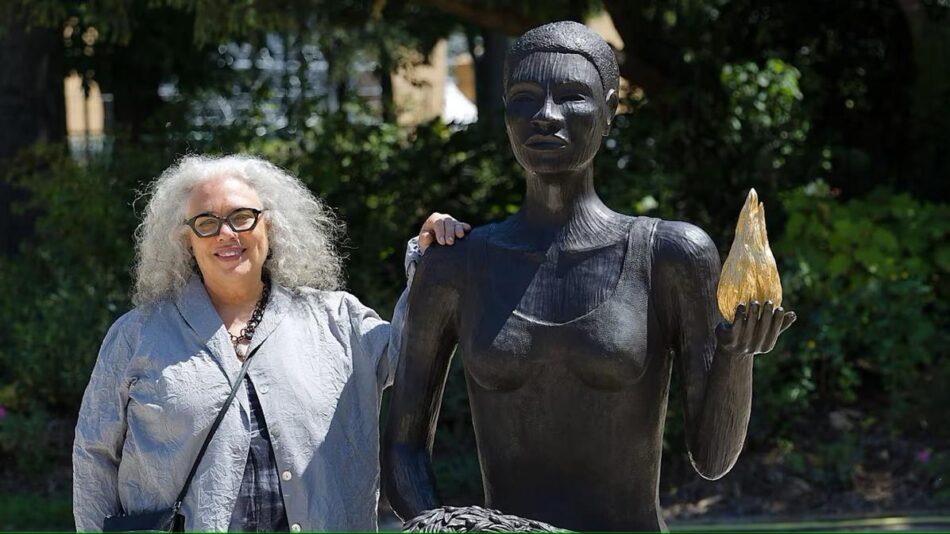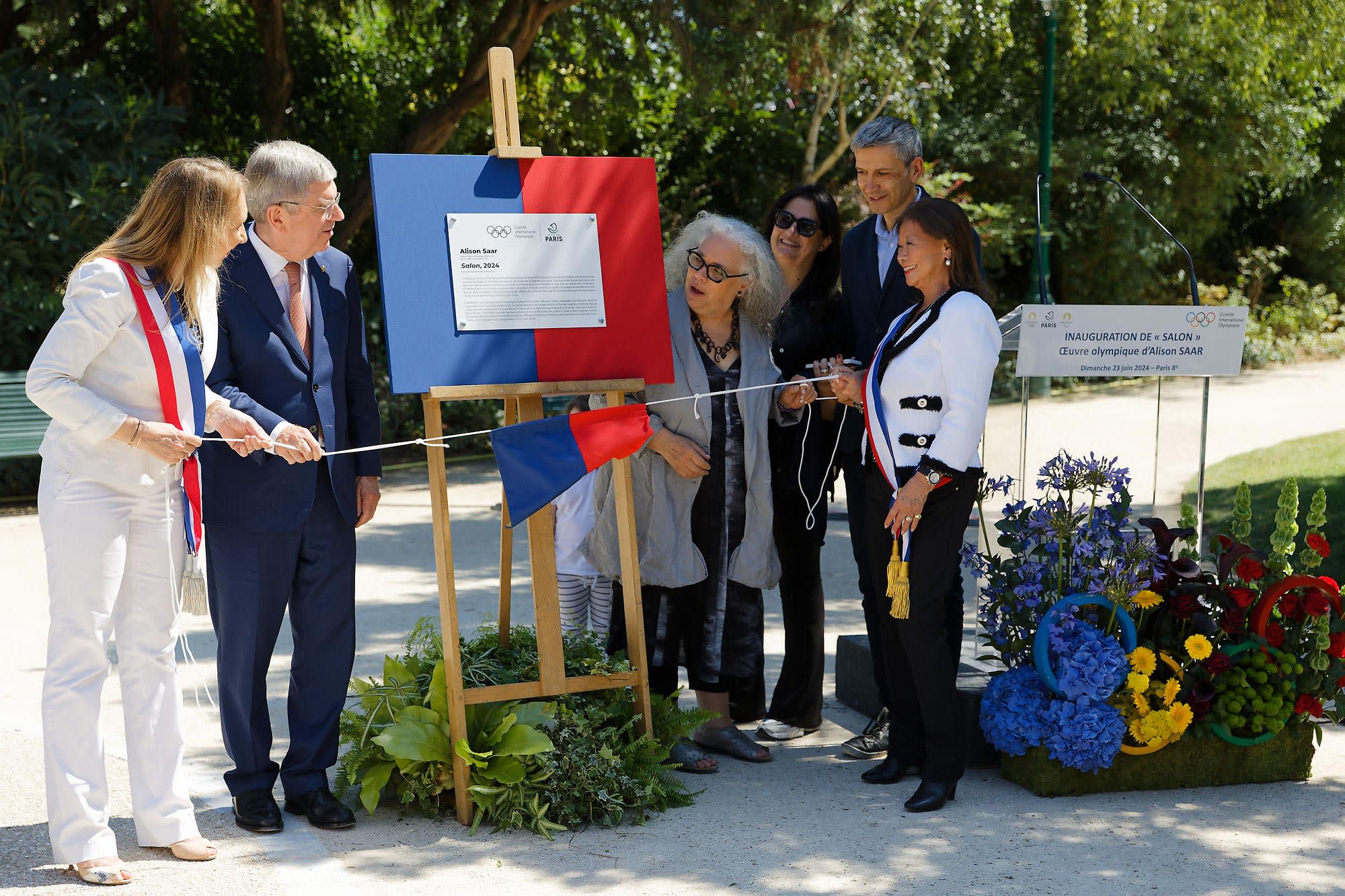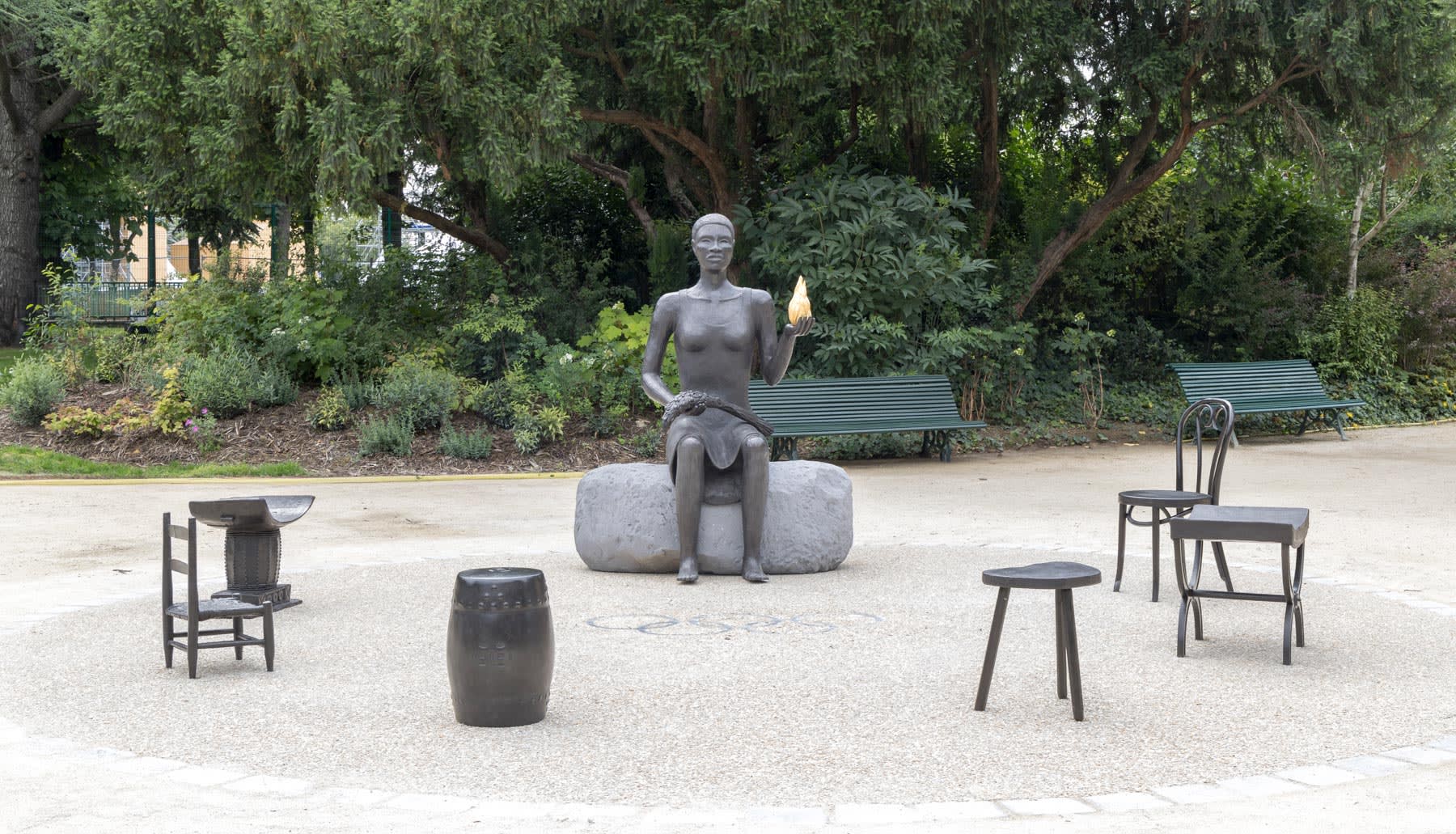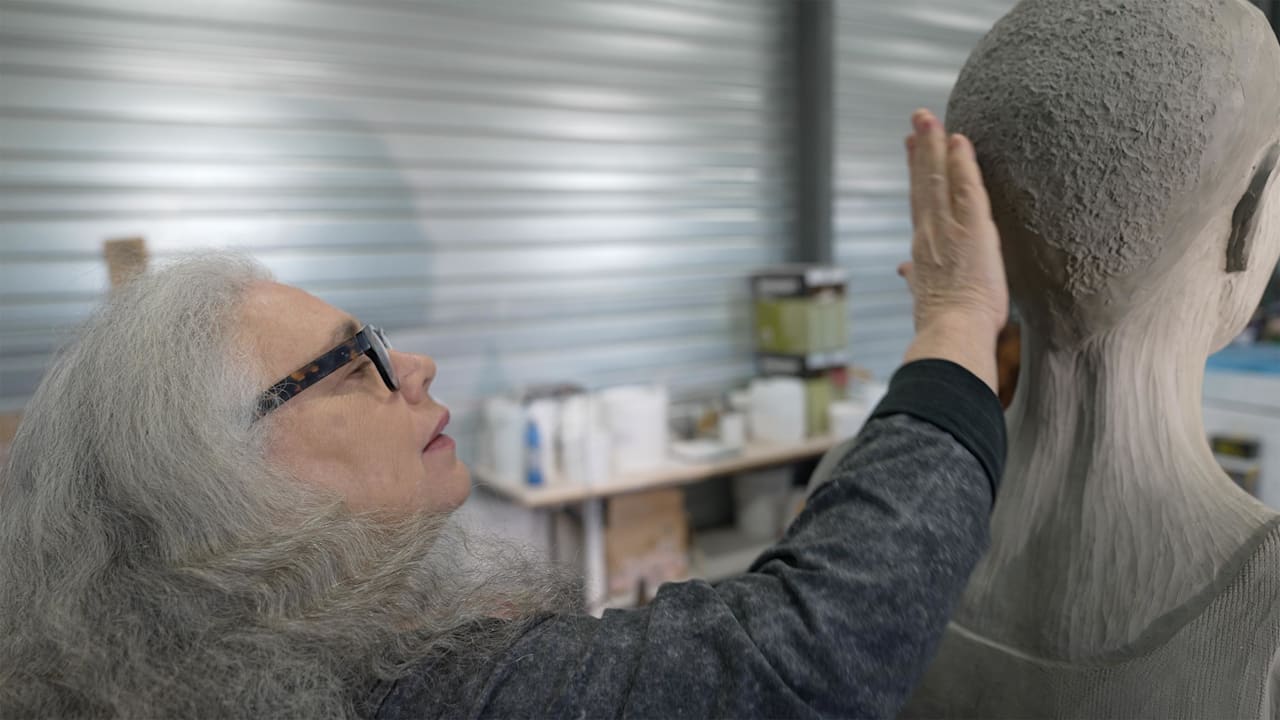International Olympic Committee and City of Paris inaugurate Olympic Sculpture

24 June 2024 – Los Angeles-based artist Alison Saar unveiled her work, Salon (2024), now permanently installed in the public garden of the Champs-Elysées, on Olympic Day, 23 June.
Saar was selected by the IOC and the City of Paris to produce the sculpture to be placed in the French capital honouring the legacy of the Olympic and Paralympic Games Paris 2024. The work serves as an invitation to the public to meet others and engage in dialogue in a spirit of shared humanity, illustrating the Olympic ideals of a peaceful and inclusive society.
The inauguration was held in the presence of IOC President Thomas Bach; Carine Rolland, Deputy Mayor of Culture at the City of Paris; Tony Estanguet, President of the Organising Committee for the Olympic and Paralympic Games Paris 2024; and Jeanne d’Hauteserre, Mayor of the 8th Arrondissement.
“Your art is an invitation to take a seat – and reflect on the beauty of diversity of humankind,” said IOC President Thomas Bach. “Each seat in this collection represents different cultures, traditions and histories. ‘Salon’ is an invitation for dialogue; for exchange; for coming together; for sharing. In this way, your sculptures are a wonderful illustration of what happens at the Olympic Games.”

Alison Saar succeeds Xavier Veilhan, who created The Audience (2021) for the Olympic Games Tokyo 2020, a work that was installed permanently in the heart of the Japanese capital as part of the Olympic Art Visions programme.
“I am deeply honoured to have been chosen to create the Olympic sculpture. I hope that this work of art, a gift to Parisians, will become a unifying place and a symbol of the spirit of friendship and interconnection between cultures and across borders.”

Alison Saar, Los Angeles-based artist
The name of Saar’s sculpture, “Salon”, refers to the comfort of a private living room and to American poet Gertrude Stein’s salons in Paris, where artist, writers, intellectuals and musicians were invited to come and share their ideas and work.

The bronze work consists of a larger-than-life figure of a woman seated on volcanic rock, holding olive boughs in one hand and a polished gold flame in the other. The flame represents inspiration, illumination and the use of the flame in the Olympics, and the olive branches refer to ancient traditions symbolising peace and victory.
The figure is seated in a circle of six chairs, each representing a different region in the world, and points to variety of industries, occupations and interests. The seats, positioned in a circle around the Olympic rings, include an honorary stool from West Africa, a hand-hewn child’s chair from Central America, a rustic milking stool from France, a ceramic garden stool from China, a classic European bentwood chair and a curule seat symbolising the origin of the Olympic Games in Ancient Greece.
The installation invites visitors to engage with the work, to sit in the chairs, to think, to share, to sing, to read, to generate friendships and encourage collaboration. To mark this intention, a first poetry reading was delivered at the inauguration by Haitian poet Jean d’Amérique as part of the Jeux Poétiques de Paris. Future poetry readings and other cultural interventions will be planned by the City of Paris to bring people together at the site of the sculpture.

The sculpture was produced over five months in France under Saar’s supervision, both to promote eco-sustainability and to support French craftsmanship and suppliers. The stone, including the volcanic rock, was sourced at a quarry in Mont-Dore in the Puy-de-Dôme region, and Saar worked with Pauline de Gourcuff and her foundry, Fonderie Fusions, in Auvergne, to cast and pour the bronze sculpture.
As part of its Olympic Art Visions programme, the IOC, through the Olympic Museum, invites renowned visual artists to create original works of art inspired by sport and the Olympic values, which are presented in publicly accessible spaces in cities hosting the Olympic Games. These artworks celebrate the notion of community, and invite the public to take part in a participatory experience and to exchange ideas in a spirit of friendship and solidarity.
The programme, unique within the Olympic Movement, strengthens the ties between host cities through an international artistic community that symbolically “passes the torch” from one edition of the Games to the next.
The following works have been previously presented as part of the Olympic Museum’s programme: The Audience (2021, for Tokyo 2020) by Xavier Veilhan; Ball Game (Youth Olympic Games Buenos Aires 2018) by Leandro Erlich; and The Giants and Inside Out (Rio de Janeiro, 2016) by JR. The works in Buenos Aires and Rio were installed on a temporary basis.
Alison Saar and Xavier Veilhan will participate in a discussion of their sculptures for Paris and Tokyo at the Beaux-Arts school in Paris on 26 June at 7 p.m. The event will be free and open to the public.
About Alison Saar
Saar was born and raised in an artistic family, and has been primarily making sculpture for most of her life. Her rich body of work examines issues of justice and compassion, focusing on people who have been underrepresented and marginalised in the past and the present.
Saar’s numerous pieces have been exhibited in prominent museums and art venues across the United States, such as the Museum of Modern Art (MoMA), the Metropolitan Museum of Art, the Museum of Fine Arts Houston and the Brooklyn Art Museum. Among her highly regarded works is the first public monument to a Black woman, Harriet Tubman, in New York City. She also recently unveiled a new piece at the Montgomery Freedom Park in Alabama as part of the Equal Justice Initiative.
About the Olympic Museum
The Olympic Museum is the international arts and culture division of the IOC and home to the world’s largest and most complete collection of Olympic heritage, including artefacts, archives, images, books and film. Located in the Olympic Capital of Lausanne, Switzerland, its international exhibitions and programmes connect people of all ages with the diverse stories, art, history and culture of the global phenomenon that is the Olympic Games. Through educational initiatives inspired by the Olympic values of respect, friendship and excellence, the Olympic Museum brings together athletes, visitors, students, artists and an affiliated network of museums across the world. For more information, please visit olympics.com/museum.





